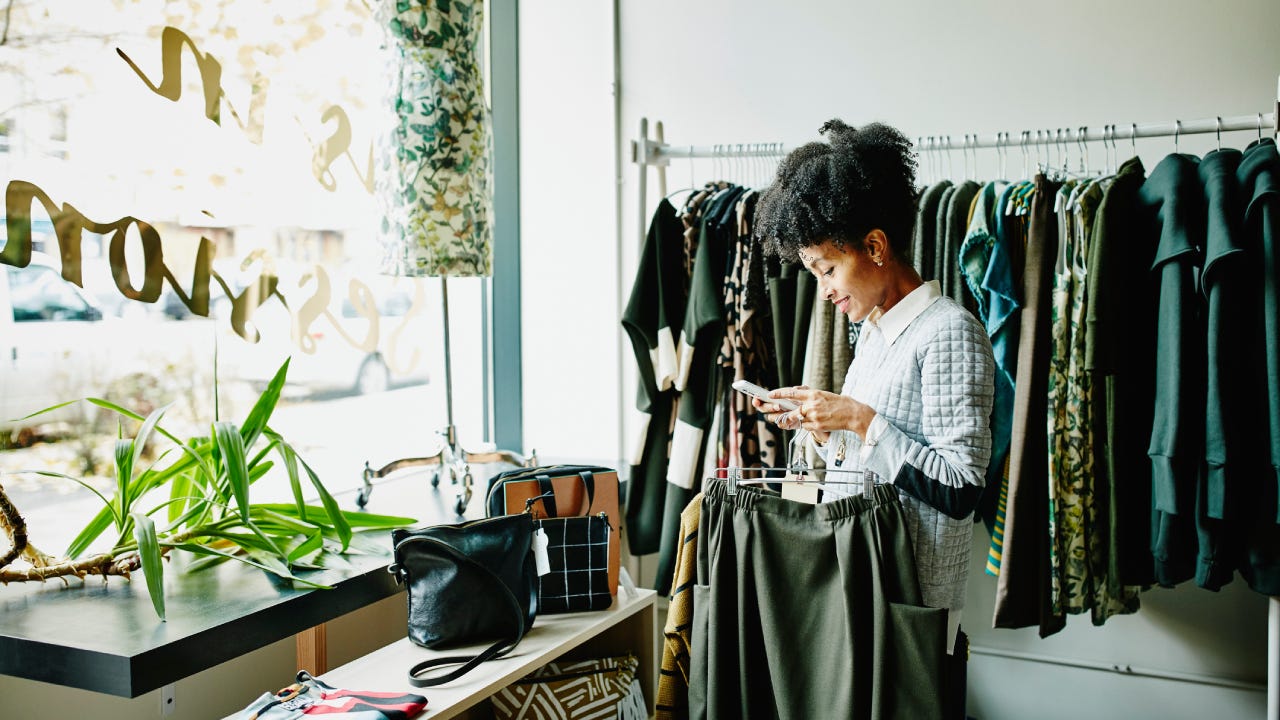The pink tax: Latest updates and statistics

If you’ve ever seen the same brand of shampoo that’s priced several dollars more for women than for men, you may have seen the “pink tax” in action.
The pink tax, or gender-specific pricing on women’s goods, contributes to the disproportionate financial burden that U.S. women face at a time when inflation is hiking up prices for many goods.
This financial burden also has disproportionate mental health effects, as 46 percent of women report that money negatively impacts their mental health, compared to 38 percent of men, according to a 2022 Bankrate poll.
This is how the pink tax and other financial burdens affect women across the U.S.
Key pink tax insights
- 41% of working women received neither a pay raise nor a better-paying job between August 2021 and August 2022, despite high inflation. (Bankrate)
- In comparison, 37% of working men received neither a pay raise nor a better-paying job between August 2021 and August 2022. (Bankrate)
- In 2020, women who worked full-time wages or as salary workers earned 82% of the median usual weekly earnings as men. (U.S. Bureau of Labor Statistics)
What is the pink tax?
The pink tax isn’t an actual government tax; it refers to discriminatory pricing that inflates the cost of goods marketed to women. It can also apply to the practice of inflating costs for women seeking services.
The term “pink tax” was popularized around the mid-1990s, when the Gender Tax Repeal Act of 1995 passed in California, prohibiting price discrimination on services.
The pink tax inflates the price of goods found on retail shelves, and small price differences can add up to women paying more than men over time. The California Senate Committee on Judiciary and Senate Select Committee on Women, Work & Families stated in 2020 that Californian women pay an average of about $2,381 more, for the same goods and services, than men per year. That can add up to about $188,000 in pink tax throughout a woman’s life.
The existence and prevalence of the pink tax has been debated in recent years. Many modern discussions of the pink tax reference a 2015 New York City Department of Consumer Affairs study, “From Cradle to Cane: The Cost of Being a Female Consumer,” which found that New York City retailers price women’s products an average of 7 percent more than similar men’s products.
However, a 2021 national study by researchers from the University of Chicago, Booth; Northwestern University, Kellogg; and Cornerstone Research found that women’s products were only more expensive than men’s in one of six retail categories examined. The study’s researchers questioned the need for legislative action against the pink tax.
Discriminatory pricing, when found, can become part of financial inequality that chips away women’s purchasing power. Women earn 82 cents for every dollar that a man is paid, according to the Bureau of Labor Statistics (BLS), a statistic that worsens for women of color and other disenfranchised women, according to the U.S. Government Accountability Office. Women are also more likely to feel stressed about their finances than men, Bankrate found in June 2022.
Inflated prices impact consumers of all genders as the U.S. economy faces high inflation. Bankrate polling from December 2022 found that most people (74 percent) are saving less due to economic factors such as inflation/rising prices, rising interest rates or changes in income or employment. This is how that breaks down by gender:
Bankrate asked: When it comes to saving for unexpected expenses, would you say that inflation/rising prices are causing you to save less, save more or not having any impact on how you are saving for unexpected expenses?
| Percentage of men | Percentage of women | |
|---|---|---|
| Save less | 67% | 69% |
| Save more | 14% | 16% |
| Not having any impact | 20% | 15% |
Source: Bankrate
Women are also likely to spend more, in proportion to their salaries, than men do, as the average single woman pays more in housing, healthcare and apparel and services due to cost of living, family size and other factors, according to BLS data. The average single, adult woman earns $39,178 annually and spends $38,838, as of 2021, compared to the average single, adult man’s earnings of $49,525 annually and spending of $41,203.
Factors such as pay gaps, as well as unequal spending and saving, all result in stark wealth inequality between women and men: families headed by women have 55 cents in median wealth for every dollar owned by families headed by men, according to 2021 data from the St. Louis Fed.
Latest legal updates on the Pink Tax
Laws in these U.S. areas explicitly outlaw the pink tax and other price discrimination:
- New York State, passed in 2020
- California, two laws passed in 1995 and 2023
- Miami-Dade County, Florida, passed in 1997
Former New York Governor Andrew Cuomo passed a law banning the pink tax in the state, outlawing retailers, manufacturers and other businesses from charging different prices for two goods that are “substantially similar,” but are marketed for different genders. Customers can also receive a written price list from service providers under the law.
California also passed a law in September 2022, which went into effect in January, prohibiting discriminatory pricing. Miami-Dade county in Florida also outlawed charging more for products or services on the basis of gender.
As of February 2023, there have been no federal laws passed against the pink tax. A federal bill, the Pink Tax Repeal Act, has been introduced several times in different iterations since 2016, most recently in 2021, but has never passed.
Pink tax pricing: Gender price differences for goods and services
There’s no common percentage difference between products marketed towards women versus men; the New York City Department of Consumer Affairs 2015 study found a wide price difference in similar items, from less than a single percentage difference to as much as 48 percent more for similar items. The study found that women were paying more for many common goods, such as an average of 48 percent more for shampoo and conditioner, 15 percent more for shirts, 13 percent more for girls’ helmets and pads, 13 percent more for girls’ shirts and 15 percent more for supports and braces, among other price differences.
It’s also important to note that different manufacturers package products differently and set different standards of quality, it can be difficult to tell if the pink tax applies to a product you may be buying.
How tariffs influence pricing
The pink tax isn’t only impacted by retailer or manufacturer decisions. Tariffs, or taxes imposed on U.S. imports from the federal government, can vary widely depending on the product, though the U.S. tariff is relatively low, according to the U.S. International Trade Commission (USITC).
However, women’s products are still sometimes tariffed higher than men’s. A 2018 USITC study found that the average applied U.S. tariff on women’s apparel was 15 percent, compared to the 12 percent tariff applied to men’s clothing. The study showed 66 percent of tariffs placed on apparel affected women’s apparel, specifically, and it estimated that women’s apparel faces $2.77 billion more in tariffs than men’s. Because tariffs are a flat rate, low-income households disproportionally pay more in tariffs compared to their income than high-income households do.
Service costs for men vs. women
Women looking for services like dry cleaning and grooming may face higher prices, just like they might see with products on the shelf.
In 2016, CBS conducted an experiment in New York City, with a female and male producer asking for dry cleaning for a very similar, cotton shirt. CBS found the female producer was charged at least twice as much for the service as her male counterpart.
Services, however, are more difficult to quantify, as not all businesses charge people of different genders differently, and some services targeted to women, such as haircuts, may be more labor-intensive than men’s services.
The pink tax and its impact on marginalized groups
Though the pink tax affects anyone purchasing products marketed to women, gender and racial pay gaps mean women of color already walk into a store with less purchasing power than white women. As of 2021, Black women overall earn 63 cents for every dollar a white man earns, while Hispanic women earn 58 cents for every dollar a white man earns, according to the U.S. Government Accountability Office.
Additionally, Black households have a significantly lower median wealth ($24,100, as of 2019) than white households ($189,100, as of 2019), according to the Center for American Progress. They are also more likely to have federal student loans and are more likely to work in lower-paying service jobs, according to the American Association of University Women.
Disabled women earn 67 cents for every dollar a disabled man earns, according to the National Women’s Law Center, while elderly women take home a lower average Social Security benefit as a result of lower lifetime earnings, about $18,049 per year as of 2021, compared to the men’s average of $22,339.
This sometimes means elderly and disabled women can have a more difficult time affording products affected by the pink tax. Canes were 12 percent more expensive when marketed to women rather than men, the 2015 New York City Department of Consumer Affairs study report found, as were compression socks (4 percent more), adult diapers (2 percent more) and digestive health products (5 percent more).
What to do if you spot price discrimination
If you are in California, New York City or Miami-Dade county, you can report price discrimination to the local government.
If you’re located in New York State, you can report price discrimination with the Division of Consumer Protection or with the state attorney general.
In Miami-Dade, you can submit a consumer complaint by email, mail or fax to the county, or by calling the Mediation Center at 786-469-2333.
In California, you can submit a consumer complaint based on the industry to the attorney general.
-
Bankrate.com commissioned YouGov Plc to conduct the survey on financial wellness. All figures, unless otherwise stated, are from YouGov Plc. The total sample size was 2,457 U.S. adults, including 1,045 who said money has a negative impact on their mental health. Fieldwork was undertaken between April 6 and 8, 2022. The survey was carried out online and meets rigorous quality standards. It employed a nonprobability-based sample using quotas upfront during collection and then a weighting scheme on the back end designed and proven to provide nationally representative results.
Bankrate.com commissioned YouGov Plc to conduct the survey on inflation and pay raises. All figures, unless otherwise stated, are from YouGov Plc. The total sample size was 2,458 U.S. adults. Fieldwork was undertaken between August 17-19, 2022. The survey was carried out online and meets rigorous quality standards. It employed a nonprobability-based sample using quotas upfront during collection and then a weighting scheme on the back end designed and proven to provide nationally representative results.
The study on emergency savings was conducted for Bankrate by SSRS on its Opinion Panel Omnibus platform. The SSRS Opinion Panel Omnibus is a national, twice-per-month, probability-based survey. Interviews were conducted from Dec. 16-19, 2022 among a sample of 1,028 respondents in English (1,003) and Spanish (25). The survey was conducted via web (998) and telephone (30). The margin of error for total respondents is +/-3.5 percentage points at the 95 percent confidence level. All SSRS Omnibus data are weighted to represent the target population.






